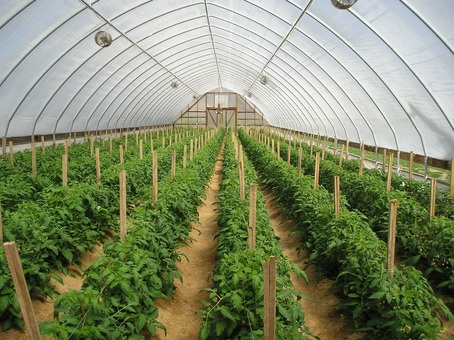#45 Optimum conditions for photosynthesis in Green house
When plants are growing outside, we can not do much about changing the conditions that they need for photosynthesis. But if crops are grown in glasshouses, then it is possible to control conditions so that they are photosynthesising as fast as possible.
CO2 enrichment
CO2 concentration can be controlled. CO2 is often a limiting factor for photosynthesis, because its natural concentration in the air is so very low (0.04%). In a closed glasshouse, it is possible to provide extra CO2 for the plants, e.g. by burning fossil fuels or releasing pure CO2 from a gas cylinder.
Optimum light
Light also can be controlled. In cloudy or dark conditions, extra artificial lighting can be provided, so that light is not limiting the rate of photosynthesis. The kind of lights that are used can be chosen carefully so that they provide just the right wavelengths that the plants need.
Optimum temperature
In some countries where it is too cold for good growth of some crop plants, the heated greenhouses can be used. This is done, for example, with tomatoes. The temperature in the glasshouse can be kept at the optimum level to encourage the tomatoes to grow fast and strongly, and to produce a large yield of fruit that ripens quickly.
The temperature can be raised by using a heating system. If fossil fuels are burned, there is also a benefit from the CO2 produced.



